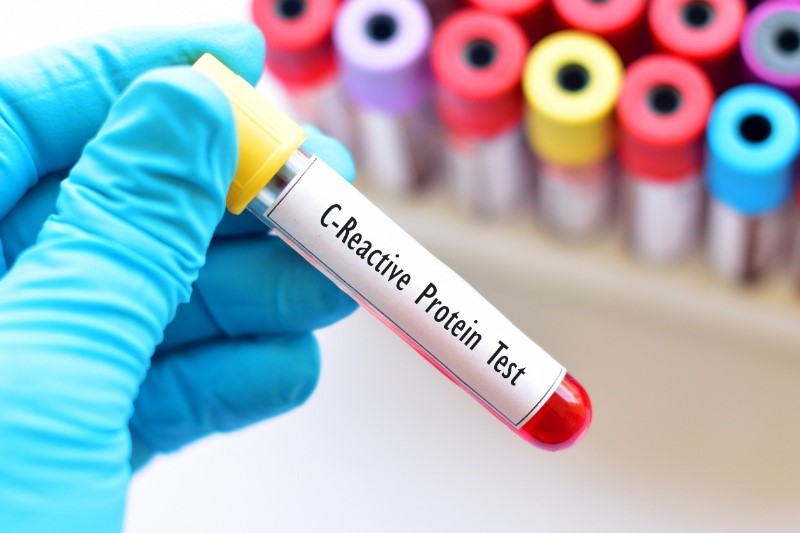
C Reactive Protein (PCR): when it is essential to confirm a suspected infection, local or systemic
C Reactive Protein (CRP), so called because of its reactivity with the Pneumococcus C polysaccharide molecule, is a protein synthesised by the liver whose concentration increases in the blood following an inflammatory process caused by an infection (bacterial, viral, fungal, parasitic) or tissue damage
Because this reaction occurs rapidly, PCR is included among the so-called ‘acute phase proteins’, indicating the presence or absence of inflammation, without being diagnostic of a specific pathology.
Its concentration increases as a result of the release of specific cytokines, which are proteins produced by immune cells rushing to the site of inflammation.
PCR is basically performed on a peripheral blood sample taken from a vein in the arm
There are several methods for determining PCR concentration, methods that rely on turbidimetric analysis or immunometric techniques using an antigen-antibody reaction.
PCR plays an important role in aiding immune defence mechanisms: it binds to the molecules of pathogens, foreign bodies and damaged tissue cells by promoting the activation of the complement system and phagocytic cells.
Its concentration therefore increases rapidly following an inflammatory process, i.e. a pathological event.
Determining the PCR concentration is useful for confirming a suspected infection, whether local or systemic (sepsis or septicaemia), or a suspected autoimmune disease or inflammatory bowel disease, or a neoplasm or damage of ischaemic origin (myocardial infarction, stroke).
The increase in PCR resulting from these disease states means that the clinician may require more in-depth investigations for a definite diagnosis or to monitor the progress of a disease
The protein also increases following surgery, trauma, burns.
No specific preparation is required.
An 8-10 hour fast is preferable, although in the case of urgent blood samples this cannot be observed.
Values below 0.5 mg/dL indicate the absence of an inflammatory process.
PCR is produced within 4-6 hours of the onset of tissue damage and inflammation
Its concentration doubles every 8 hours before peaking around 36 hours.
In the course of an inflammatory process, PCR values generally increase in proportion to the extent and magnitude of the damage.
In particular, the increase in PCR is more moderate during viral infections than during bacterial infections, and among the latter there is a different increase depending on the pathogen involved.
Evaluation of PCR concentration is particularly useful when monitoring the course of a disease and/or the effectiveness of a therapy
A decrease in the blood level following an anti-inflammatory treatment indicates the effectiveness of the therapy; conversely, if, for example, the blood level does not decrease following surgery, this may mean that a complication has occurred.
It is therefore important to emphasise that whenever there is an increase in the blood level of PCR, this signifies an alarm situation, whereas a decrease in it represents an improvement in the disease.
Remember that there are non-pathological conditions during which an increase in CRP is possible: in new-born babies in the first few days of life, in the last period of pregnancy, in the obese, during therapy with certain drugs.
In the case of liver failure, there may not be an increase in CRP even during one of the above-mentioned diseases, as the liver is not able to synthesise it.
Read Also:
Emergency Live Even More…Live: Download The New Free App Of Your Newspaper For IOS And Android
From Autism To Schizophrenia: The Role Of Neuroinflammation In Psychiatric Diseases
What Is Albumin And Why Is The Test Performed To Quantify Blood Albumin Values?
What Is Cholesterol And Why Is It Tested To Quantify The Level Of (Total) Cholesterol In The Blood?
Gestational Diabetes, What It Is And How To Deal With It
What Is Amylase And Why Is The Test Performed To Measure The Amount Of Amylase In The Blood?
Adverse Drug Reactions: What They Are And How To Manage Adverse Effects
Albumin Replacement In Patients With Severe Sepsis Or Septic Shock
Provocation Tests In Medicine: What Are They, What Are They For, How Do They Take Place?
What Is Uric Acid And Why Is It Tested To Monitor Its Concentration In The Blood?


